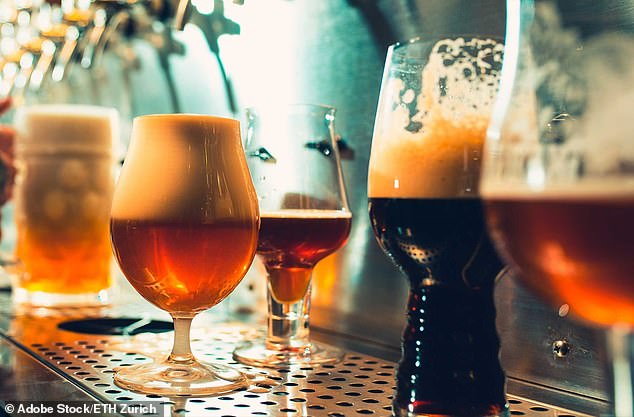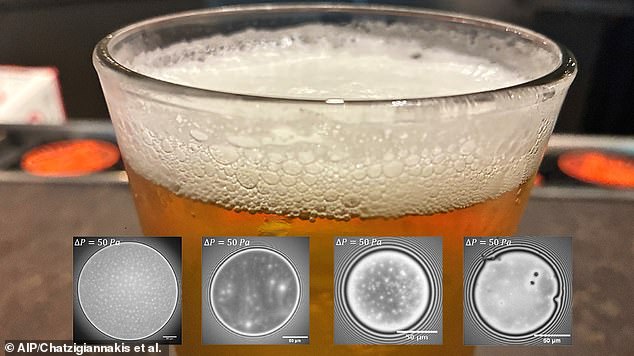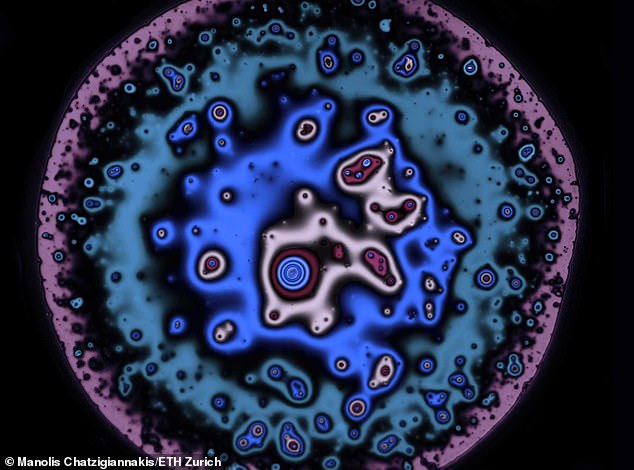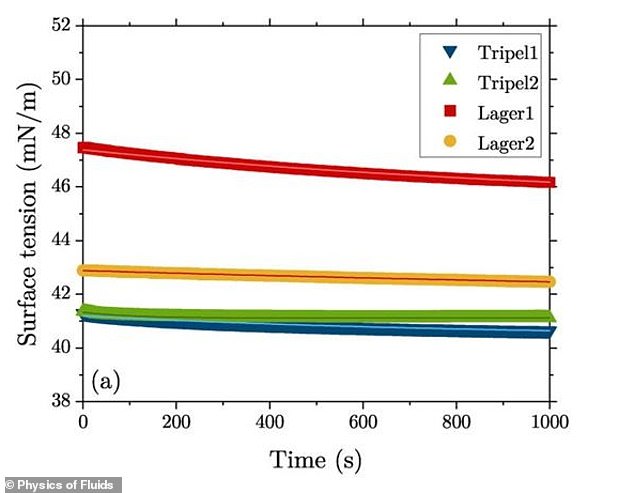Receiving a pint without a substantial, creamy head is a frequent source of annoyance for those who enjoy drinking in pubs.
However, a recent study suggests it may not be because of bartenders making mistakes while pouring.
Scientists in Switzerland and theNetherlandsdiscovered that the foam stability in beer is caused by a protein found in the liquid.
This protein is generally more prevalent in 'triple-fermented' beers, which are particularly favored in Belgium.
This is the reason why the foam on Belgian beers tends to persist for a longer duration, particularly when contrasted with ales and lagers typically served in British pubs, which tend to lose their foam quickly.
Beer head is regarded as significant because itcreates beer that is up to two times more fragrant, enhances texture, and makes a beer appear more appealing.
'We now have a clear understanding of the process and can assist the brewery in enhancing the foam of their beers,' said study author Jan Vermant, a Belgian scientist and beer enthusiast at ETH Zurich.
There are numerous fields where the understanding we have obtained from beer is being applied effectively.


As per the researchers from ETH Zurich and Eindhoven University of Technology, each beer bubble is divided by narrow layers of liquid, which progressively reduce in thickness once the beer is poured, caused by the pressure exerted by neighboring bubbles.
As the liquid layers become sufficiently thin, the bubbles rupture and the foam disintegrates.
However, the speed at which this happens is strongly connected to the fermentation process, where sugars are transformed into carbon dioxide and alcohol.
In some cases, brewers carry out fermentation multiple times to produce double or triple fermented beers, commonly referred to in Belgium as dubbel and tripel, which are typically stronger and more intricate compared to single-fermented beers ('singel').
By employing microscopic imaging methods, researchers examined six commercially available beers, such as Westmalle Tripel, a Belgian tripel that has an alcohol percentage of 9.5.
Also featured were Westmalle's dubbel and singel, along with Tripel Karmeliet (a different Belgian tripel having an ABV of 8.4 per cent), as well as Swiss lagers Feldschlösschen and Chopfab.
The group discovered that beers that undergo triple fermentation produce the most consistent foam, followed by those with double fermentation, and lastly, single-fermented lagers.
Typically, beer foam diminishes because of LTP1, a type of protein derived from grains used in brewing, like barley and wheat, they mention.

In beers that undergo a single fermentation process, such as the lagers studied, LTP1 proteins are tiny, round particles that cluster closely on the surface of the bubbles.
"The small 'spheres' are in contact with one another but do not adhere," said Professor Vermant to the Daily Mail.
So they do offer some resistance, making the interface more dense and sticky (in comparison to pure water), although it still cannot withstand significant stress.
In beers that undergo double fermentation, the proteins within the beverage combine to create a two-dimensional structure, resulting in thin films that exhibit elasticity, allowing them to remain stable for a longer period.
In triple-fermented beers, the LPT1 proteins are split into pieces that have both a water-repellent and a water-attracting part.
These pieces help alleviate the stress between the bubbles and ensure the bubbles remain stable as much as possible, according to specialists.
"These amino acid segments act similarly to surfactants, which help maintain foams in various common uses like cleaning agents," stated Professor Vermant.
Since British pubs typically concentrate on offering ales and lagers that undergo a single fermentation process – which could explain why they often lose their headspace rapidly.

The latest discoveries, featured in the journalPhysics of Fluids, could assist brewers in producing beer with a longer-lasting head.
Brewers may subject their beers to additional fermentation processes or alter the characteristics of LPT1 proteins to create a more effective shield against bubbles.
"[We] suggest that this protein [LPT1] is the one to focus on," said Professor Vermant.
Nevertheless, the scholar acknowledges that foam is not crucial in all places where beer is served, as it's "essentially a cultural aspect."
"I'm from Belgium, and in my country, a foam froth is considered an indicator of quality," he said to the Daily Mail.
This might not be a view that everyone agrees with.
A co-author of the study, Emmanouil Chatzigiannakis from Eindhoven University of Technology, mentioned that foam is typically linked with consumer contentment.
"It largely depends on cultural factors, but it also affects the texture and mouthfeel, as well as helps preserve the beer's aroma," he mentioned.
Read more